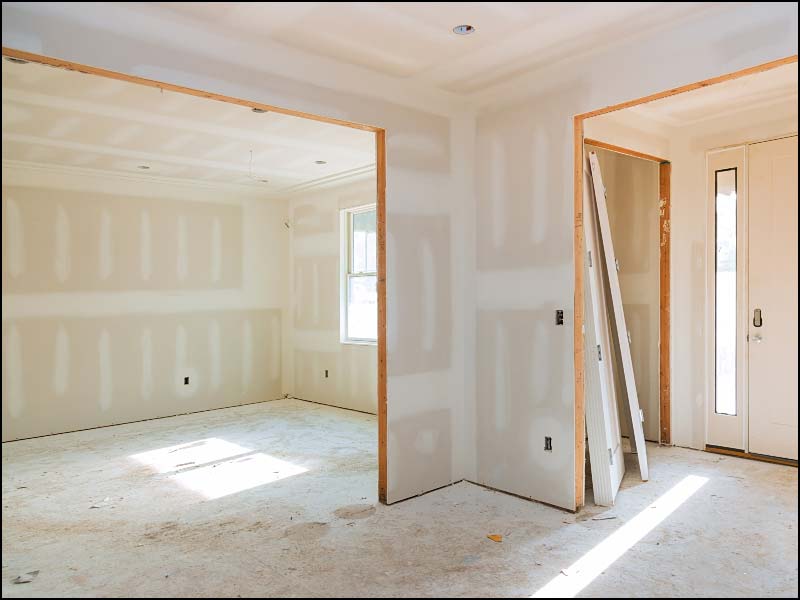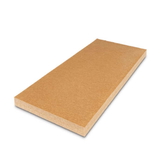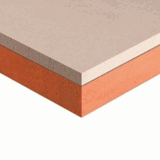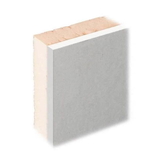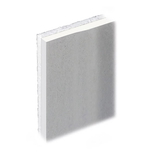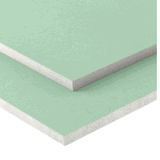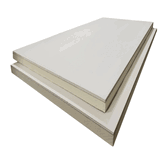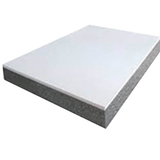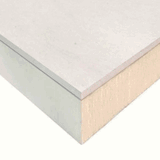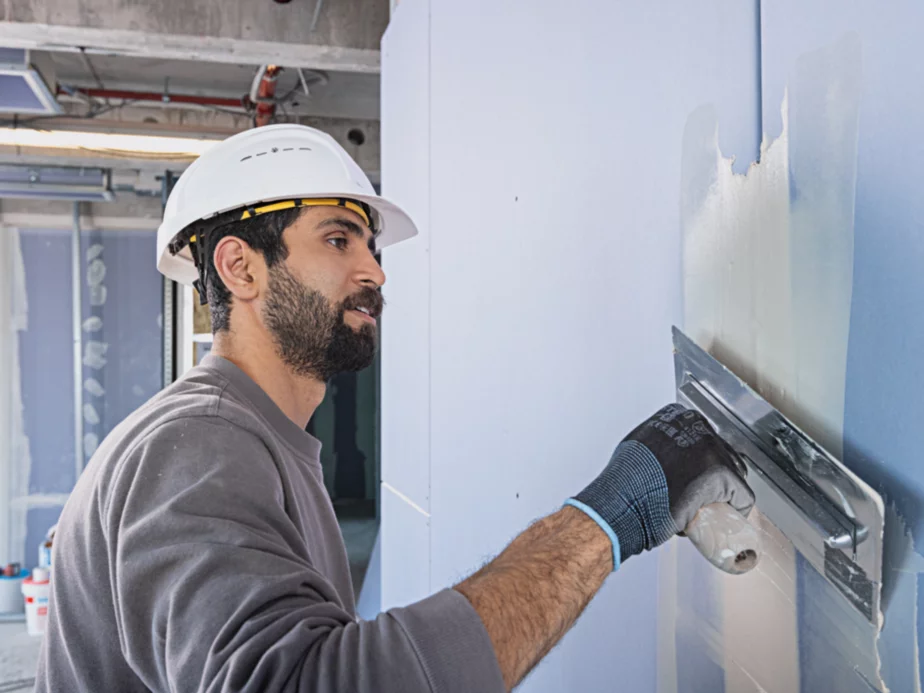- Blogs
- Gaps in Insulation Boards: A Professional's Guide to Cutting, Sealing, and UK Compliance
Gaps in Insulation Boards: A Professional's Guide to Cutting, Sealing, and UK Compliance

TLDR: Executive Summary
Gaps between insulation boards, often caused by poor cutting, are a critical failure point in a building's thermal envelope. They lead to significant heat loss through thermal bridging, increase the risk of damaging condensation and mould, and can cause a building to fail to meet UK Building Regulations. Achieving a perfect, gap-free fit is not merely a sign of good workmanship; it is essential for the thermal performance, structural health, and legal compliance of a property.
This guide provides a detailed examination of the consequences of insulation gaps, practical techniques for precisely cutting PIR and EPS boards, and a review of the products available to seal and fill joints. It also covers the specific UK standards, including Part L of the Building Regulations, that mandate insulation continuity and hold installers accountable for their work.
The Hidden Costs of Gaps: Why a Perfect Insulation Fit is Non-Negotiable
A tightly fitted layer of insulation is fundamental to a building's energy efficiency. However, the performance of even the best materials can be severely compromised by small, seemingly insignificant gaps left during installation. These imperfections create a cascade of problems, from invisible heat loss to visible structural decay.
Understanding Thermal Bridging: The Motorway for Heat Loss
A thermal bridge, also known as a cold bridge, is a localised area within the building envelope where heat can bypass the primary insulation layer. These are pathways of least resistance that allow warmth to escape far more easily than through the surrounding insulated structure. While elements like steel beams, concrete lintels, and metal fixings are known causes, one of the most common and avoidable sources of thermal bridging is gaps between poorly fitted insulation boards.
When rigid insulation boards like PIR or EPS are not cut accurately, leaving jagged edges or small openings, they fail to form a continuous thermal barrier. These gaps, no matter how narrow, effectively become thermal bridges. Heat loss through these weak points can be substantial, accounting for up to 30% of a home's total heat loss in installations with significant flaws. This forces the heating system to work harder to maintain a comfortable indoor temperature, leading directly to higher energy bills for the occupant.
The consequences extend to thermal comfort. Cold bridges result in cold spots on the interior surfaces of walls and ceilings. These areas can make a room feel draughty and unevenly heated, even when the thermostat is set to a high temperature.
The Condensation Risk: From Nuisance Moisture to Structural Threat ![gaps in insulation boards]()
The cold surfaces created by thermal bridges are prime locations for condensation to form. This occurs when warm, moist air generated by everyday activities like cooking, bathing, and even breathing comes into contact with a surface that is at or below the dew point temperature. The water vapour in the air then turns back into liquid water. This process gives rise to two distinct and serious problems.
Surface Condensation is the visible form, appearing as moisture, damp patches, or black mould on interior walls, ceilings, and around window reveals. Mould growth is not just unsightly; it poses a considerable health risk, potentially causing or aggravating allergies and respiratory conditions.
Interstitial Condensation is a more insidious threat. This is condensation that occurs unseen within the fabric of the building, such as inside a wall cavity or roof structure. Moisture trapped here can cause the slow decay of timber joists and rafters and the corrosion of metal fixings, compromising the building's structural integrity over time.
The issue of damp and condensation is widespread across the UK. In 2021, around 912,000 households in England faced damp issues. Similar problems have been reported across Scotland, Wales, and Northern Ireland, highlighting the national scale of the issue often linked to poor insulation and ventilation.
Performance and Compliance: The Real-World Impact on Energy Bills and Regulations
The physical problems of thermal bridging and condensation have direct financial and legal consequences. The disparity between a building's designed energy efficiency and its actual performance is often called the "performance gap," a problem frequently caused by poor quality installation and gaps in the insulation. For a building owner, this translates into persistently high energy bills and the potential for expensive remedial work to fix damp, mould, or structural damage.
For the installer or contractor, the implications are even more serious. A failure to ensure a continuous, gap-free layer of insulation is not just poor practice; it is a failure to comply with UK Building Regulations. Specifically, Approved Document L (Part L) mandates the continuity of insulation and the limitation of thermal bridging. Recent updates to these regulations have introduced a requirement for photographic evidence of the installation quality at key stages. A visible gap is therefore documented proof of non-compliance, which can prevent a building from being signed off by building control and may lead to legal penalties. The simple act of cutting an insulation board has transformed from a basic task into a compliance-critical activity with significant professional liability.
Achieving Precision: A Practical Guide to Cutting Insulation Boards
The first line of defence against gaps is to cut insulation boards accurately. The correct technique and tool depend on the type of insulation being used—primarily Polyisocyanurate (PIR) or Expanded Polystyrene (EPS).
Cutting PIR (Polyisocyanurate) Boards (e.g., Celotex, Kingspan)
PIR boards are rigid and foil-faced. Cutting them cleanly requires a stable setup and the right approach for the board's thickness.
Essential Tools and Preparation Before starting, gather the necessary equipment: a stable work surface (such as a sacrificial board over sawhorses), a quality tape measure, a reliable straight edge (a spirit level or timber batten works well), and a marker. Always wear appropriate Personal Protective Equipment (PPE). PIR dust can be a mechanical irritant, so a dust mask, safety goggles, and gloves are essential. Remember the old adage: "measure twice, cut once" to ensure accuracy and minimise waste.
Technique 1: The Score-and-Snap Method (for thinner boards <50mm) This method is fast, clean, and effective for thinner PIR boards.
-
Mark your cut line clearly on the foil face.
-
Place a straight edge firmly along the line. Using a sharp utility knife (e.g., a Stanley knife), make a single, deep score along the guide.
-
Position the board on a hard, straight edge (like a workbench) with the scored line slightly overhanging.
-
Apply firm, even pressure to the overhanging side to snap the board cleanly along the score.
-
Finally, use the utility knife to slice through the foil backing on the reverse side to separate the pieces.
Technique 2: Using Hand Saws for Thicker Boards (>50mm) For thicker PIR boards, a saw is often required.
-
Use a fine-toothed hand saw or a specialised insulation saw for the best results.
-
Mark the line and use a straight edge clamped to the board as a guide to ensure the cut remains perfectly square.
-
Be aware that this method produces a large amount of dust. Good ventilation or on-tool dust extraction is highly recommended, alongside your PPE.
-
Using a knife with a long, wide blade (such as a large kitchen knife or a Japanese pull saw) can also work well, as the wide blade helps prevent the cut from wandering and keeps the edge square with less dust than a toothed saw.
Technique 3: Employing Power Saws (Circular, Jigsaw, Table Saw) For multiple straight cuts, a power saw offers speed and precision.
-
A circular saw with a guide rail (a track saw) will deliver the most accurate, straight cuts.
-
For very thick boards, a single pass with a standard circular saw may not be deep enough. In this case, cut from one side, flip the board, and cut along the same line from the other side. Alternatively, finish the cut with a hand saw.
-
Power saws generate a very high volume of dust. An effective dust extraction system connected to the tool is not just recommended; it is practically essential for a clean and safe working environment.
Cutting EPS (Expanded Polystyrene) Boards
EPS is a lighter, cellular foam that can be challenging to cut cleanly with conventional tools. Jagged edges and a blizzard of static-charged white beads are common problems when using the wrong method.
The Professional's Choice: Hot Wire and Hot Knife Cutters For EPS, a hot wire or hot knife cutter is the superior tool. It provides a factory-quality finish with no mess.
-
Mechanism: These tools use a heated wire or blade that melts through the foam rather than tearing it. This process seals the edges of the cut, preventing the release of beads and creating a perfectly smooth surface.
-
Types: Large, bench-mounted hot wire cutters are ideal for making long, straight cuts on full-sized boards. Portable, hand-held hot knives or "styrobows" are excellent for cutting curves, making intricate shapes, and trimming boards to fit around obstacles like pipes or electrical boxes.
-
Safety Protocols: Always use these tools in a well-ventilated space to disperse any fumes produced by the melting process. Heat-resistant gloves are a sensible precaution to protect against accidental burns from the hot element.
Manual Methods: Using Fine-Toothed Saws and Knives While manual tools can be used for EPS, they are far from ideal and generally result in a lower-quality finish.
-
Using a standard saw or knife often results in a jagged, uneven edge and creates a large amount of mess from loose polystyrene beads, which are difficult to clean up due to static electricity.
-
If manual cutting is the only option, use a very sharp, long-bladed utility knife. Make multiple, shallow passes along a straight edge rather than trying to cut through in one go. For saws, a very fine-toothed blade moved with a slow, steady action will give the best possible result.
The choice of cutting tool is a strategic one. While a basic hand saw is inexpensive, investing in a specialised tool like a track saw for PIR or a hot wire cutter for EPS is an investment in quality, speed, and, most importantly, compliance. A clean, accurate cut is the foundation of a gap-free, high-performance insulation system.
A Comparison of Insulation Board Cutting Tools ![]()
Choosing the right tool is critical for achieving a clean cut and a tight fit. The best tool depends on the insulation material.
-
Utility Knife: A standard utility knife is best suited for the "score-and-snap" technique on thinner PIR boards (under 50mm thick), where it can produce a good quality, clean cut with minimal dust. However, it is a poor choice for EPS, as it tends to create messy, jagged edges. This method is generally slower than using power tools.
-
Hand Saw: For thicker PIR boards, a fine-toothed hand saw is a cost-effective option. It offers fair to good cut quality, though using a straight-edge guide is recommended to ensure a square cut. This method produces a significant amount of dust, so appropriate PPE and ventilation are essential.
-
Circular Saw or Track Saw: For making multiple, straight cuts in PIR boards, a circular saw, particularly a track saw, offers excellent speed and precision. The main drawback is the very high volume of dust created, which makes an effective dust extraction system a necessity for a safe working environment.
-
Hot Wire or Hot Knife Cutter: This is the professional standard for cutting EPS boards. These tools use a heated element to melt through the foam, creating a perfect, factory-smooth sealed edge with no mess from loose beads. While they are fast and produce the best finish, they do create some fumes, so they must be used in a well-ventilated area.
A Gasket-Tight Finish: Products for Sealing and Filling Insulation Gaps
Even with perfectly cut boards, achieving a completely sealed thermal envelope requires attention to the joints between boards and where they meet the building structure. A combination of proactive taping and, where necessary, reactive filling will ensure a truly continuous barrier.
Proactive Sealing: Tapes for an Unbroken Thermal Envelope
Taping joints should be standard practice, not an afterthought. It turns a collection of individual boards into a single, monolithic layer that is resistant to air and moisture movement.
The Role of Aluminium Foil Tape for Board-to-Board Joints When installing foil-faced PIR insulation, the primary method for sealing the joints between tightly butted boards is aluminium foil tape. This simple step is critical for two reasons: it maintains the continuity of the air barrier, preventing draughts, and it completes the vapour control layer (VCL), which stops moisture from penetrating the structure.
For effective application, ensure the board surfaces are clean, dry, and free of dust. Apply the tape centrally over the joint, ensuring equal overlap on both boards. Smooth it down firmly with a squeegee or a small block of wood to eliminate any air bubbles and ensure a strong, lasting bond. Several reputable brands are available in the UK, including Novia, SuperFOIL, Soudal, and Klasse, offering tapes in various widths to suit different applications.
Specialised Tapes for Sealing Between Insulation and Framing The junction between an insulation board and a timber stud or rafter is a notorious weak point for air leakage. Specialised tapes have been developed to address this specific thermal bridge. A leading example is Gapo Tape, a composite product combining foam and foil. It is designed to be applied to the edge of the timber framing before the insulation board is installed. The foam compresses to create a perfect, airtight gasket-like seal in the gap. Products like this, which often carry BBA (British Board of Agrément) certification, provide an engineered solution to a common installation problem.
A Closer Look at Gapo Tape: How It Works
Gapo Tape is an engineered solution specifically designed to eliminate the air gap and resulting thermal bridge between rigid insulation boards and timber framing like studs or rafters. It is a composite tape made from a combination of foam and foil.
Unlike tapes applied after fitting, Gapo Tape is applied to the edge of the timber framing before the insulation board is pushed into place. As the board is fitted, the foam on the tape compresses, creating a durable, airtight, gasket-like seal that prevents air leakage and drafts.
This proactive approach is highly effective at ensuring insulation continuity. The product is BBA (British Board of Agrément) certified, a key indicator of its tested performance and compliance with building regulations. By creating a reliable seal, it can help reduce heat loss by up to 30% in the treated areas.
Installation is straightforward: the tape is simply applied to the clean, dry surface of the timber stud or rafter. The insulation board is then fitted snugly against it, activating the compression seal. It is available in various widths to match the thickness of the insulation boards being used.
Reactive Filling: Using Expanding Foam For Gaps
While the goal is to eliminate gaps through precise cutting and fitting, some complex junctions or accidental imperfections may require filling. In these cases, expanding polyurethane (PU) foam can be an effective solution, but it must be used correctly.
Choosing the Right Product: Low-Expansion vs. Standard PU Foams This is a vital distinction. Standard, high-yield expanding foams can exert considerable pressure as they cure, enough to bow or bend rigid insulation boards. This can create new gaps and stresses in the construction.
For insulation work, it is essential to use a low-expansion or flexible PU foam. These products are specifically formulated to fill cavities without exerting excessive force. They adhere well to insulation boards and the surrounding structure, creating an airtight and insulating seal. UK suppliers offer a range of suitable products, such as Soudal's flexible foams, Everbuild Thermofoam, and Ceresit CT84, which are often marketed as "insulation adhesives" or "window and door foams" due to their low-expansion properties.
Application Best Practices Expanding foams are available in two main types: hand-held cans with a disposable nozzle, and gun-grade cans that require a reusable applicator gun. Gun-grade applicators offer far greater control over the flow rate, allowing for a more precise and economical application, which is better for filling narrow gaps neatly.
When applying, only fill the gap to about 50% of its depth; the foam will expand to fill the remaining space. For some products, lightly misting the surfaces with water before application can help the foam cure properly. Once the foam has fully cured, any excess can be neatly trimmed flush with the insulation surface using a sharp knife.
A Comparison of Gap Treatment Solutions
Even with precise cutting, sealing joints is a vital step. The right product depends on whether you are proactively sealing a joint or reactively filling an unexpected gap.
-
Aluminium Foil Tape: This is the primary product for proactively sealing the joints between foil-faced PIR boards. Tapes from brands such as Novia, SuperFOIL, and Soudal create a continuous air and vapour barrier, which is essential for preventing draughts and moisture ingress. For a durable bond, the tape must be applied to clean, dry board surfaces and smoothed down firmly to remove any air bubbles.
-
Specialised Gasket Tape: For the crucial junction between insulation boards and timber framing (studs or rafters), a specialised gasket tape is an engineered solution. A key example is Gapo Tape, a composite foam and foil tape. It is applied to the timber before the insulation board is fitted. As the board is pushed into place, the foam compresses to form a reliable, airtight seal.
-
Low-Expansion PU Foam: When accidental or irregular gaps need to be filled reactively, a low-expansion polyurethane (PU) foam is the correct choice. Products from brands like Soudal, Everbuild (Thermofoam), and Ceresit (CT84) are designed to fill voids without exerting excessive pressure that could bow or damage the insulation boards. Using a gun-grade applicator allows for greater control. The gap should only be partially filled to allow for expansion, and any excess can be trimmed away once the foam has fully cured.
The Regulatory Landscape: Ensuring Your Work Meets UK Standards
Achieving a high-quality, gap-free insulation installation is not just a matter of best practice; it is a legal requirement under the Building Regulations for England and Wales. Understanding these regulations is essential for any professional installer. 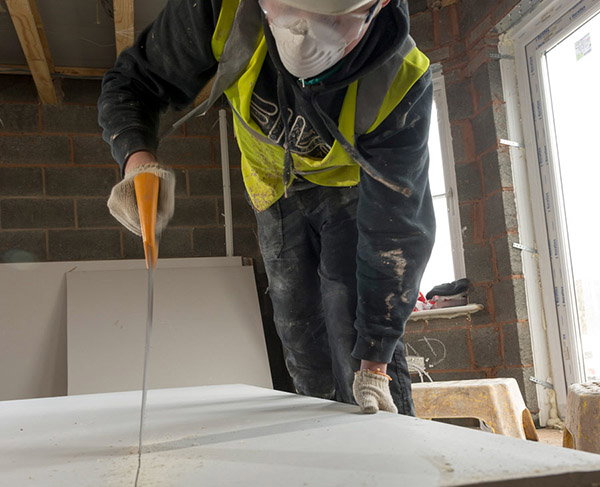
Part L of the Building Regulations: The Mandate for Insulation Continuity
Approved Document L, which covers the "Conservation of fuel and power," is the primary regulation governing energy efficiency in buildings. A central principle of Part L is the requirement for continuity of insulation.
What "Continuity of Insulation" Means in Practice This concept means that the thermal insulation layer must be continuous and uninterrupted around the entire heated envelope of the building—including walls, floors, and roofs. At the design stage, a useful method to check this is the "pen-on-section" test: on a cross-section drawing of the building, it should be possible to trace the line of the insulation around the entire perimeter without lifting the pen. Any break in this line represents a potential thermal bridge that must be addressed. This principle makes it clear that gaps between insulation boards are a direct contravention of the regulation's intent.
The Role of Photographic Evidence A significant change in the most recent updates to Part L is the mandatory requirement for photographic evidence to be submitted as part of the Building Regulations England Part L (BREL) report. For each new dwelling, installers must take geo-tagged photographs of key construction details, including the insulation, before it is covered by subsequent layers like plasterboard.
This development fundamentally changes the dynamic of compliance. It is no longer possible to hide poor workmanship. A gap between insulation boards, a poorly sealed joint, or a crushed corner will be clearly visible in the photographic record provided to the building control body. This shifts the burden of proof squarely onto the installer to demonstrate that their work meets the required standards. It makes the cutting and sealing techniques discussed previously essential tools for creating the evidence needed for a project to be legally signed off.
Key British Standards for Insulation Workmanship
Alongside the Building Regulations, a number of British Standards provide the technical guidance for achieving a high-quality installation.
-
BS 5250: Management of moisture in buildings. This is the code of practice for controlling condensation in buildings. It underpins the need for effective ventilation strategies and continuous vapour control layers. Sealing the joints of foil-faced insulation boards with foil tape is a direct application of the principles in BS 5250, as it helps to create an unbroken VCL.
-
PAS 2035: Retrofitting dwellings for improved energy efficiency. For retrofit projects, particularly those receiving public funding, this standard is becoming increasingly important. It explicitly requires that thermal bridges are identified and properly treated as part of any insulation upgrade, reinforcing the need for gap-free installation.
Best Practice Checklist for a High-Performance Installation
To synthesise this guidance into an actionable process, follow this checklist for every rigid board insulation project.
-
Planning & Design: Before starting, review the architectural drawings. Identify the continuous insulation layer and the air barrier line. Look for complex junctions and plan how to detail them to avoid thermal bridges.
-
Preparation: Set up a clean, stable cutting station. Ensure you have the correct PPE (mask, goggles, gloves) and the right tools for the specific insulation material you are working with (e.g., hot wire cutter for EPS, track saw for PIR).
-
Measurement & Cutting: Measure every piece twice before cutting once. Use a straight edge or guide rail for every cut to ensure edges are straight and square. The goal is a snug, friction fit.
-
Fitting: Install boards so that they are tightly butted together at every joint. Avoid compressing the insulation to force it into a space, as this can reduce its performance.
-
Sealing: Proactively seal all board-to-board joints on foil-faced insulation with the correct aluminium foil tape. At junctions with timber framing, use a specialised gasket tape like Gapo Tape to ensure an airtight seal.
-
Filling: Use a gun-grade, low-expansion PU foam only as a reactive measure to fill small, unavoidable, or irregular gaps. It is a tool for problem-solving, not a substitute for accurate cutting.
-
Documentation: As required by Part L, take clear, well-lit, geo-tagged photographs of your installation at all key junctions. This evidence must be captured before the insulation is covered by plasterboard or other finishes.
Legal Disclaimer
The information contained in this article is provided for general informational purposes only and is based on regulations and practices in the United Kingdom. It should not be construed as professional, legal, or technical advice on any subject matter. The content does not take account of individual circumstances and may not reflect the most recent changes in laws or standards.
You should not act or refrain from acting on the basis of any content included in this article without seeking appropriate professional advice from a qualified architect, surveyor, structural engineer, or other relevant construction professional. You should also consult with your local building control body to ensure compliance with all applicable regulations for your specific project. All product specifications should be verified directly with the manufacturer.
We expressly disclaim all liability in respect to actions taken or not taken based on any or all of the contents of this article to the fullest extent permitted by law. No liability is accepted for death or personal injury arising from our negligence, or for fraudulent misrepresentation, or any other liability which cannot be excluded or limited under applicable law.

Samuel Hitch
Managing Director
Buy Insulation Online.
Leave A Reply
Your feedback is greatly appreciated, please comment on our content below. Your email address will not be published. Required fields are marked *







